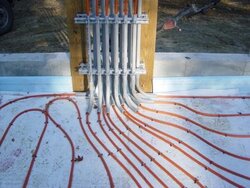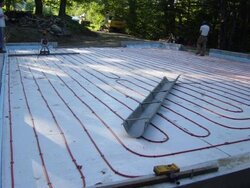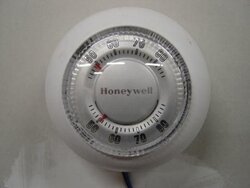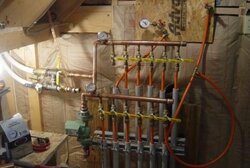I'm having a garage built this spring and want to lay some pex before pouring the slab.
At the moment, I have no immediate plans for the actual heat source, and will likely use some form of space heater instead for the time being, but would like the pex in place for future use.
I could use a basic 'How To' and/or some guidelines or recommendations for the whole process - from vapor barrier and insulation to the amount of pex needed, and so on. I'm pretty ignorant.
I did an initial web search and got a number of hits, but I'm wondering if someone here could point me to a simple, straightforward site that covers most of the important points?
--
I'd also like to hear some opinions on whether it's really a practical way to achieve what I want... which is to be able to use the garage - occasionally - on 'moderate' winter days... say in the 20's to 40's... NOT in the worst weather Wisconsin has to offer.
The truth is, I have no idea how long it might take to raise the temp of the slab (or the garage) to (something approaching) 60*.
--
As you can see, I could use some help just getting started...
Thanks for any/all replies.
Peter B.
-----
At the moment, I have no immediate plans for the actual heat source, and will likely use some form of space heater instead for the time being, but would like the pex in place for future use.
I could use a basic 'How To' and/or some guidelines or recommendations for the whole process - from vapor barrier and insulation to the amount of pex needed, and so on. I'm pretty ignorant.
I did an initial web search and got a number of hits, but I'm wondering if someone here could point me to a simple, straightforward site that covers most of the important points?
--
I'd also like to hear some opinions on whether it's really a practical way to achieve what I want... which is to be able to use the garage - occasionally - on 'moderate' winter days... say in the 20's to 40's... NOT in the worst weather Wisconsin has to offer.
The truth is, I have no idea how long it might take to raise the temp of the slab (or the garage) to (something approaching) 60*.
--
As you can see, I could use some help just getting started...
Thanks for any/all replies.
Peter B.
-----





